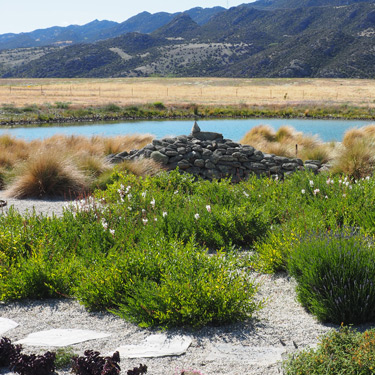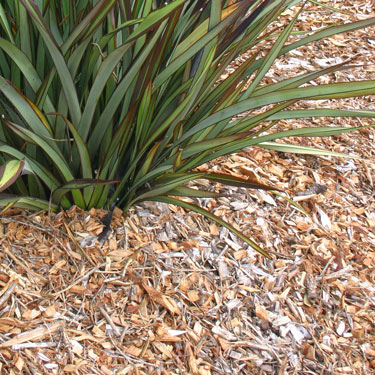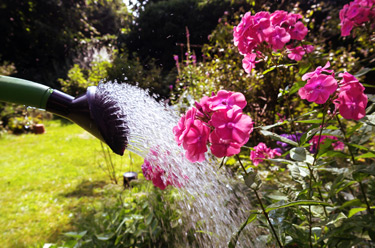Save water
Every precious drop -11 ways to save water in the garden
Much of New Zealand has broken weather records over recent years. High temperatures have combined with low rainfall. In light of such weather extremes we are reminded not to take for granted our most precious commodity.
With water restrictions for those on town supply and nothing much coming from the heavens for those dependent on rain water tanks, what can we do to get through the big dry? How can gardeners get the most out of every precious drop?
Sally Brown from Blueskin Nurseries in Dunedin has some tips.
| 1 | Cover any bare soil on garden beds with a thick layer of mulch (or compost) as a ‘blanket’ to block soil moisture loss. Adding organic mulch and compost to your soil improves its spongy structure and hence its ability to hold water for plants. Using a (weed-free) mulch has the added advantage of cutting down on weeds, which are of course water robbers in their own right. |
| 2 | Hand water! It’s time-consuming but this relaxing task is far more efficient than watering by sprinkler where wind and heat can evaporate a large proportion and water isn’t necessarily reaching the root zone where it falls. Make hand watering a pleasure by investing in a comfortable watering wand with different application options. |
| 3 | Use a wetting agent such as Saturaid to help plants in containers stay moist for longer. Saturaid is reported to reduce water requirements by up to 50% for plants, promoting even water distribution to roots and reducing run off and dry spots when incorporated into soil or potting mix. Some bagged potting mixes already include it. Sally says water retention granules are also useful to store and release moisture to plants. |
| 4 | Feed with seaweed, especially young plants and lawns. Seaweed is a proven plant tonic, which promotes strong root growth and enhances a plants natural resistance to drought and other stresses. Turn to page 30 to be in to win Thrive Natural Seaweed Hose-on, a quick and easy pick-me-up for the entire garden and lawn. |
| 5 | Store your own water. Do you have an opportunity to put in extra water catchment tanks? Think ahead, these patterns may be with us for years to come so invest in water storage where you can. |
| 6 | Water deeply every few days rather than light watering every day. Deep watering encourages roots to grow deeper into the soil where more water is stored and your plants will become more drought resistant as a consequence. |
| 7 | Use grey water where you can. An average load of washing can produce several buckets of water, perfectly good for sharing with plants and the soapy water can help to deter insects and aphids from your vegetables. |
| 8 | Group pots together for easier watering. This way they will shelter each other from drying wind and sun. If possible, place pots and hanging baskets where they are sheltered from wind. |
| 9 | Water in the early morning, the evening, or when the temperatures are lower, to reduce water losses from evaporation. |
| 10 | Apply water directly to the root zone where it is needed. Watering foliage is wasteful and serves only to invite disease. |
| 11 | Choose mainly drought tolerant plants, especially if you garden in a dry climate, and group plants with high water needs together in one area. Keep lawns small. Choose drought tolerant lawn seed.
|
Raw products like wood chips, sawdust and bark use soil nitrogen as they decompose. Compensate for this with fertiliser at the time of mulching. Do not use sawdust from treated timber.

26-Mar-2018

In dry Central Otago Jo Wakelin plants exclusively with drought tolerant plants.

Wood chip mulch

Hand watering

Group pots together

